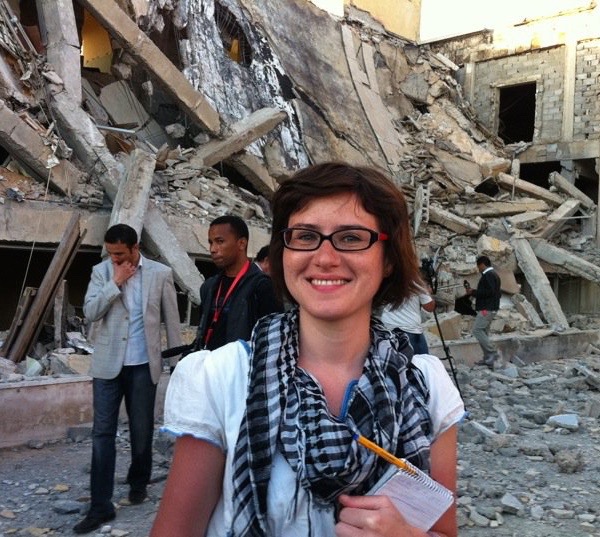Comment
How Maria Golovnina - and Playboy - saved my life
Thursday 4 June 2015
 As we pay tribute to Maria Golovnina (photo) in London I am reminded of the day she saved my life in Bishkek, and how she did it with her usual mix of loyalty and courage, and a little bit of help from Playboy magazine.
As we pay tribute to Maria Golovnina (photo) in London I am reminded of the day she saved my life in Bishkek, and how she did it with her usual mix of loyalty and courage, and a little bit of help from Playboy magazine.
It was April 2010 and we arrived in the capital of Kyrgyzstan on a rainy, grey day and into the centre of the violent anti-government protests that were killing dozens then.
Our first stop was a hospital, and right away I was reminded of why I liked going to conflict zones with Maria as we moved through the blood-smeared building with its dead and dying. There are some reporters who lose themselves to emotions, who panic, who inject themselves into the action with their political views, forgetting why they are there. But Maria never panicked, never lost focus. I thought of her then as being like a hunter, her eyes often narrowed in concentration, her ears open to the opinions of others, her mouth not offering her own. Her quarry: news.
As we made our way into the centre of Bishkek we were each other’s shadows, weaving through the dusk and chaos as we headed to the town square. By the time we arrived the rain had cleared but the carnage had intensified. A group of protesters were trying to storm a nearby government building from where soldiers were shooting at them. Again, I was inspired by Maria’s focus on the task in hand. I remember thinking: “Wow, you keep this up all day.”
But focus and a press badge isn’t always enough. Soon we were surrounded by a group of protesters who, noticing my flak jacket, mistook me for a government soldier. “Who are you? Who are you?” they screamed. Maria was pushed out of the circle as it enclosed me, and they ripped off my camera and clothing, beating me unconscious.
I was out cold and only found out the details of what had happened next when Reuters stringer Olga Dzubenko filled me in years later. Maria had rallied Olga, other journalists and a group of less aggressive protesters, and together they waded into the hostile crowd. But their entreaties, at first, did not work. I was not a journalist, my captors claimed, but a government spy. What is Reuters? They had never heard of it. It’s a famous news organisation, my protectors shouted. They wouldn't budge.
It’s like Playboy, Maria yelled. And that was it, I was freed.
I came to at the base of a fountain, and I remember the protective circle that Maria had put together, and I remember that Maria was near. She rushed me to hospital and my life was saved. Two days later I was transported in an ambulance back to Almaty, Kazakhstan. She was there again, a comforting presence in the front of the vehicle. Our “little samurai,” as cameraman Shavkat Rakhmatyllayev called the Tokyo-raised reporter.
It’s an image I think of now she has passed and we look for ways to hold on to her. We all have our images of Maria, from being in the field with her, or from the great photos of her that have multiplied across her friends’ Facebook pages. The reporter whose courage and physical strength was legendary, who humped packs with troops in Afghanistan, outwitted Ghaddafi’s thugs in Tripoli and outran rioters in obscure corners of forgotten countries.
But among these memories of journalistic heroics, let us not forget the Maria that was “our” Maria. The feisty tear-away who battled for colleagues: on the phone to London editors, with government officials in intimidating offices, and on a blood-soaked square in Bishkek where she once risked her life to save mine. ■
- « Previous
- Next »
- 954 of 1807